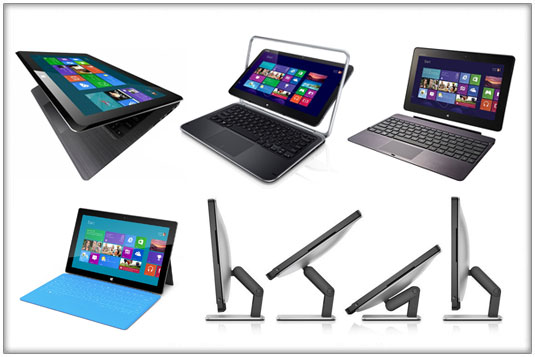What Windows 8 Means for Marketers
Late last month, Microsoft released a new version of Windows that probably represents the most significant change in the operating system since its inception. Just like the original Windows operating system solidified the transition from the keyboard-only input of the past to the keyboard/mouse solutions we use today, Windows 8 marks a similar transition: the addition of touch-based computing into the core suite of standardized user input methods.
Until now, touch has been largely the interface for secondary devices, like smartphones and media tablets. The operating systems that most people use at work, like Mac OS, Windows and Linux have treated touch as a second-class citizen, putting the majority of the emphasis on the keyboard/mouse paradigm that's existed since the 80s.
With the release of Windows 8, Microsoft has placed a major bet on touch becoming just as important as the mouse and keyboard you use at your desk today. To get the most out of the new operating system, a touch-screen is practically a necessity. And PC manufacturers have already begun releasing innovative devices that take full advantage of the new keyboard/mouse/touch paradigm.

This, along with several of the other changes in Windows 8, have some significant implications for marketers. After using the operating system for close to a month, here are the biggest take-aways for marketing professionals:
- The line between mobile and desktop computing will become meaningless in a few years. Windows 8 will not only be used on traditional computers such as laptops and desktops, but also on tablets, where there's no keyboard or mouse. Optimizing your website and applications for touch is no longer an option. If your website requires visitors to click tiny links or navigate large, nested drop-down menus, you need to think about updating your site. Read more in my previous article about touch computing.
- Flash, Java and other browser plugins are essentially dead. Unlike many other tablet operating systems, Windows 8 does support Flash, but there are huge caveats. You see, there are two versions of the browser in Windows 8. One of them operates exactly like your current browser, allowing plugins and everything else you enjoy and/or despise today. However, there's a new touch-based version of the browser which doesn't support plugins. Flash is supported in the touch-based browser, but only for sites that have been specifically whitelisted by Microsoft. In other words, the Flash videos and animations on your site will not work in the default browser on Windows 8. This is the nail in the coffin for using Flash, Java and other plugins for anything that isn't absolutely necessary.
- The app store model has arrived on Windows. If your business felt the need to invest in iOS or Android apps in the past couple years, it's likely that you should start budgeting for a Windows version as well. Windows 8 has an app store and unlike the OS X app store, its primary focus is on mobile, touch-based apps, closer to what you'd find in the current iOS and Android marketplaces. Within the first week of its launch, Windows 8 web traffic accounted for 6% of iOS's total web traffic and 13% of Android's total traffic. It's nearly inevitable that the Windows Store will become just as important as the other mobile app stores in the years to come.
- Certain web analytics and online advertising tracking may get complicated. Microsoft made the controversial decision to set the default browser to "do not track" which, if successful, may make it more difficult to collect visitor browsing information across multiple websites. While this doesn't affect things like the on-site Google Analytics that you're probably using, it may affect certain online advertising techniques such as retargeting.
In the long term, it's likely that the changes made in Windows 8 will have far-reaching implications for the future of the web and how we interact with our computers during the business day. In the short term, I'd expect quite a bit of resistance to the new paradigm. Most people don't get excited about changing their workflow, and probably won't be motivated to learn something new until they absolutely have to. The advantages of Windows 8 are best seen when using a new, modern device, not when upgrading your existing computer, so adoption will probably be much slower than Windows 7.
However, when planning your marketing for 2013, 2014 and beyond, make sure you consider that the typical computer used by your audience is likely to be much different from the one you're using today.
To get our latest articles when they are posted, please subscribe by e-mail or RSS.
